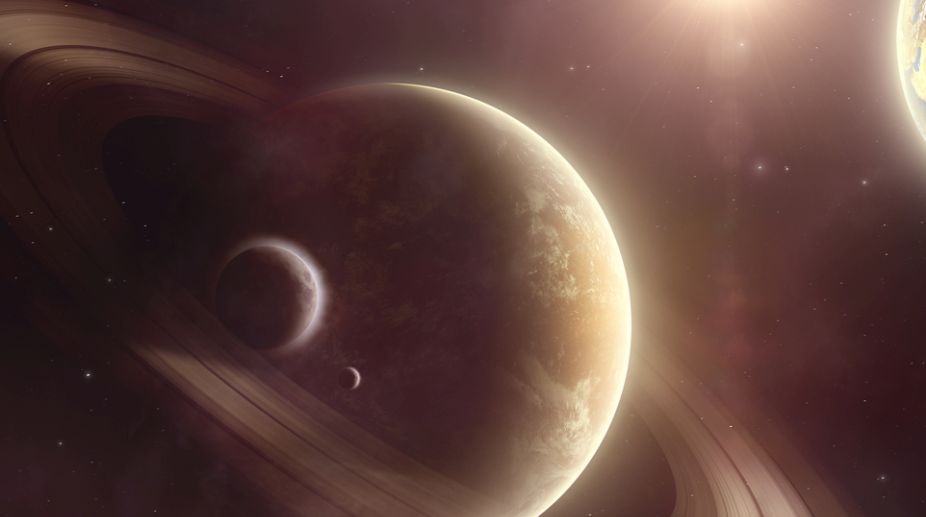Scientists compile Cassini’s unique observations of Saturn’s rings
To determine the size of the ring particles, UVIS observed them when the instrument was pointed at the Sun, looking through the rings in what is known as a solar occultation.

Saturn moon (Getty Images)
Saturn's icy, ocean-bearing moon Enceladus may have tipped over in the distant past possibly due to a collision with a smaller body, such as an asteroid, according to recent research from NASA's Cassini probe.
Examining the moon's features, researchers with the Saturn mission found evidence that the moon's spin axis — the line through the north and south poles — has reoriented.
Advertisement
Enceladus appears to have tipped away from its original axis by about 55 degrees — more than halfway toward rolling completely onto its side, showed the study published online in the journal Icarus.
Advertisement
"We found a chain of low areas, or basins, that trace a belt across the moon's surface that we believe are the fossil remnants of an earlier, previous equator and poles," said lead author Radwan Tajeddine, a Cassini imaging team associate at Cornell University, Ithaca, New York.
The area around the icy moon's current south pole is a geologically active region where long, linear fractures referred to as tiger stripes slice across the surface.
Tajeddine and colleagues speculate that an asteroid may have struck the region in the past when it was closer to the equator.
"The geological activity in this terrain is unlikely to have been initiated by internal processes," he said.
"We think that, in order to drive such a large reorientation of the moon, it's possible that an impact was behind the formation of this anomalous terrain," he added.
In 2005, Cassini discovered that jets of water vapour and icy particles spray from the tiger stripe fractures of Enceladus — evidence that an underground ocean is venting directly into space from beneath the active south polar terrain.
The Cassini-Huygens mission is a cooperative project of NASA, ESA (European Space Agency) and the Italian Space Agency.
Advertisement